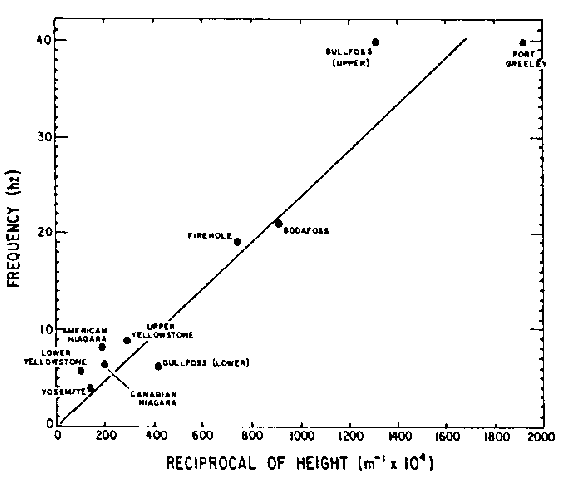 |
Science Frontiers ONLINE No. 119: Sep-Oct 1998 |
|
|
Waterfall Phenomena
Waterfalls are more than just cascades of disorganized water molecules. There must be some structure and regularities in these streams of crashing fluid because waterfalls generate remarkable acoustical and luminous phenomena.
First, we recall those curious pure acoustical tones that have recently been detected by seismic recorders in the ocean near French Polynesia. (SF#115) Geologist W.A. Charlie has associated these tones in the ocean with the strange but well-verified pure tones heard emanating from some waterfalls.
Charlie recalls that the famous European geologist A. Heim observed that 15 Alpine waterfalls all produced two nonharmonizing groups of pure acoustical notes. These, a Zurich musician likened to the major-C triad and F. (Heim published his observations in a paper entitled: "Tone der Wasserfalle." Verhandlung der Schweizeren Naturforschung Gesellschaft, 8:209, 1874)
In his letter to the magazine Earth (now defunct), Charlie wondered if the same resonant tonegenerating mechanism (rising clouds of bubbles) operated in both the oceans and waterfalls.
(Charlie, Wayne A.; "Musical Monotones," Earth, 7:7, June 1998.)
Comments. In our catalog Earthquakes, Tides (GQV2), we recorded how waterfalls produce low-frequency terrestrial vibrations with one frequency predominating. This characteristic frequency is inversely proportional to the height of the waterfall.
Just as fascinating are the remarkable flashes of light that emanate (rarely) from the bases of waterfalls. These may be due to sonoluminescence. (GLD14 in Lightning, Auroras)
 |
|
The predominant fequency in waterfall vibrations depends upon the height of the waterfall. (From: Earthquakes, Tides). |